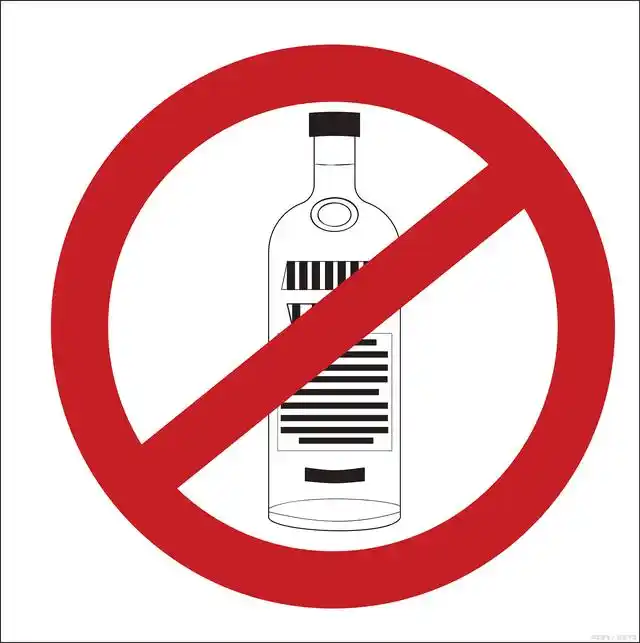The Devastating Effects of Alcohol on the Human Body: A Comprehensive Breakdown

Alcohol, often celebrated in social settings as a “relaxant” or “social lubricant,” carries a hidden toll on nearly every system in the human body. While moderate consumption may seem harmless to some, even small amounts of alcohol can cause cumulative damage over time, and excessive or long-term use leads to severe, sometimes irreversible health consequences. From the liver—the organ most famously impacted by alcohol—to the brain, heart, digestive tract, and beyond, alcohol disrupts normal bodily functions, damages cells, and increases the risk of life-threatening diseases. Understanding these harms is not just about discouraging overconsumption; it’s about empowering individuals to make informed choices about their health. Below is a detailed exploration of how alcohol wreaks havoc on key bodily systems, supported by scientific mechanisms and common health outcomes.
1. The Liver: Alcohol’s Primary Target and the Path to Chronic Disease
The liver is the body’s primary organ for metabolizing alcohol, and this role makes it the most vulnerable to alcohol-related damage. When you consume alcohol (ethanol), the liver breaks it down using two main enzymes: alcohol dehydrogenase (ADH) and aldehyde dehydrogenase (ALDH). ADH first converts ethanol into acetaldehyde—a toxic byproduct that damages liver cells and DNA—before ALDH further breaks it down into acetate, a harmless substance that the body can use for energy. However, the liver can only process about one standard drink (e.g., 12 ounces of beer, 5 ounces of wine, or 1.5 ounces of liquor) per hour. When you drink faster than this rate, acetaldehyde accumulates, and the liver’s ability to repair itself is overwhelmed. Over time, this leads to three progressive stages of liver damage: fatty liver, alcoholic hepatitis, and cirrhosis.
Fatty Liver (Steatosis): This is the earliest and most common stage of alcohol-related liver disease (ARLD), affecting nearly 90% of people who drink heavily for even a short period (e.g., a few weeks of binge drinking). Alcohol disrupts the liver’s ability to break down fats, causing fat to build up in liver cells. At this stage, many people have no symptoms, but some may experience fatigue, abdominal discomfort, or mild weight loss. The good news is that fatty liver is reversible if alcohol consumption stops early—within a few weeks to months, the liver can clear the excess fat and recover. However, if drinking continues, the damage progresses to a more severe stage.
Alcoholic Hepatitis: This is an inflammatory condition that occurs when prolonged heavy drinking causes ongoing damage to liver cells. Inflammation triggers swelling, scarring, and the death of liver tissue. Symptoms of alcoholic hepatitis include jaundice (yellowing of the skin and eyes), abdominal pain and swelling (from fluid buildup), nausea, vomiting, fever, and confusion. In severe cases, it can lead to liver failure, which is life-threatening—up to 50% of people with severe alcoholic hepatitis die within 30 days if they do not stop drinking and receive medical treatment. Even with treatment, recovery is slow, and some damage may be permanent.
Cirrhosis: This is the final, irreversible stage of ARLD, affecting about 10-20% of people who drink heavily for 10 or more years. Cirrhosis occurs when healthy liver tissue is replaced with scar tissue, which blocks blood flow through the liver and impairs its ability to perform critical functions (e.g., filtering toxins, producing proteins for blood clotting, and storing energy). Symptoms of cirrhosis include severe fatigue, weight loss, bleeding gums, easy bruising (due to reduced clotting proteins), fluid buildup in the abdomen (ascites) and legs (edema), and confusion or coma (from hepatic encephalopathy, a condition where toxins build up in the brain). Cirrhosis increases the risk of liver cancer (hepatocellular carcinoma)—a deadly disease with a 5-year survival rate of less than 20%—and liver failure, which often requires a liver transplant to survive. Once cirrhosis develops, even stopping drinking cannot reverse the scarring, though it can slow further damage and improve quality of life.
2. The Brain: Impaired Function, Structural Damage, and Neurological Disorders
Alcohol is a central nervous system depressant, meaning it slows down brain activity by enhancing the effects of gamma-aminobutyric acid (GABA)—a neurotransmitter that reduces nerve cell excitability. While this may cause temporary feelings of relaxation or euphoria, long-term alcohol use damages brain cells, disrupts neurotransmitter balance, and alters brain structure, leading to cognitive decline, mood disorders, and even permanent neurological damage.
Acute Brain Effects: Intoxication and Blackouts
In the short term, alcohol impairs cognitive function, motor skills, and judgment. Even a small amount of alcohol can slow reaction times (increasing the risk of car accidents), blur vision, and impair decision-making (e.g., risky sexual behavior or poor financial choices). At higher blood alcohol concentrations (BAC), alcohol can cause blackouts—periods of time where the brain cannot form new memories, even though the person may appear awake and alert. Blackouts occur when alcohol suppresses the hippocampus, the brain region responsible for memory formation. They are a sign of severe brain impairment and increase the risk of injury, assault, or overdose.
Chronic Brain Damage: Shrinkage and Cognitive Decline
Long-term heavy drinking leads to structural changes in the brain, including shrinkage of the cerebral cortex (the outer layer responsible for thinking, reasoning, and problem-solving) and the hippocampus. A study published in The Lancet found that people who drink more than 14 standard drinks per week have a 10% higher risk of brain shrinkage than non-drinkers, and the risk increases with higher consumption. This shrinkage leads to persistent cognitive problems: difficulty concentrating, memory loss (especially short-term memory), impaired decision-making, and reduced ability to learn new skills. Over time, these issues can interfere with work, relationships, and daily life.
Alcoholic Dementia and Wernicke-Korsakoff Syndrome
For some heavy drinkers, brain damage progresses to more severe neurological disorders. Alcoholic dementia is a type of dementia caused by long-term alcohol use, characterized by gradual decline in memory, language, and social functioning. It affects about 10% of people with alcohol use disorder (AUD) and is often underdiagnosed because its symptoms overlap with other forms of dementia (e.g., Alzheimer’s disease).
Wernicke-Korsakoff Syndrome (WKS) is a life-threatening neurological disorder caused by thiamine (vitamin B1) deficiency— a common issue in heavy drinkers, as alcohol interferes with thiamine absorption and storage in the body. WKS has two stages: Wernicke’s encephalopathy (acute) and Korsakoff’s psychosis (chronic). Wernicke’s encephalopathy causes confusion, ataxia (loss of muscle coordination, leading to difficulty walking), and nystagmus (involuntary eye movements). If left untreated, it can progress to Korsakoff’s psychosis, which is marked by severe memory loss (especially of recent events), confabulation (making up stories to fill in memory gaps), and difficulty learning new information. Up to 80% of people with WKS do not recover fully, and many require long-term care.
3. The Cardiovascular System: Increased Risk of Heart Disease, Stroke, and Hypertension
While some studies have claimed that “moderate” alcohol consumption (e.g., one drink per day for women, two for men) may have minor benefits for heart health (e.g., increasing HDL “good” cholesterol), these benefits are often overstated—and they are far outweighed by the risks of excessive or long-term use. Alcohol damages the cardiovascular system in multiple ways, increasing the risk of high blood pressure, heart failure, stroke, and irregular heart rhythms.
Hypertension (High Blood Pressure)
Alcohol raises blood pressure by several mechanisms: it increases heart rate, constricts blood vessels, and causes the body to retain fluid (by suppressing the hormone vasopressin, which regulates water balance). Even moderate drinking (1-2 drinks per day) can increase blood pressure, and heavy drinking (more than 3 drinks per day) doubles the risk of hypertension. Hypertension is a “silent killer” because it often has no symptoms, but it damages artery walls over time, increasing the risk of heart attack, stroke, and kidney disease. For people with existing hypertension, alcohol can make the condition worse and reduce the effectiveness of blood pressure medications.
Irregular Heart Rhythms (Arrhythmias)
Alcohol is a common trigger for atrial fibrillation (AFib)—the most common type of arrhythmia, where the upper chambers of the heart (atria) beat irregularly and too fast. AFib reduces the heart’s ability to pump blood effectively, increasing the risk of blood clots, stroke, and heart failure. “Holiday heart syndrome” is a term used to describe AFib that occurs after a single episode of heavy drinking (e.g., binge drinking during holidays or parties), even in people with no prior heart problems. Long-term alcohol use can also cause ventricular tachycardia—a more serious arrhythmia that affects the lower chambers of the heart and can lead to sudden cardiac death.
Heart Failure and Cardiomyopathy
Alcoholic cardiomyopathy is a condition where long-term heavy drinking damages the heart muscle, making it weaker and less able to pump blood. Over time, this leads to heart failure— a chronic condition where the heart cannot meet the body’s demand for blood. Symptoms of heart failure include shortness of breath (especially during activity or when lying down), fatigue, swelling in the legs and feet, and rapid or irregular heartbeat. Alcoholic cardiomyopathy affects about 1-2% of heavy drinkers, and it is reversible in some cases if drinking stops early. However, if damage is severe, it can lead to permanent heart failure and death.
Stroke
Alcohol increases the risk of both ischemic strokes (caused by a blood clot blocking an artery to the brain) and hemorrhagic strokes (caused by a blood vessel in the brain rupturing). Ischemic strokes are more common in heavy drinkers because alcohol increases blood clotting, raises blood pressure, and damages artery walls (leading to atherosclerosis, or buildup of plaque). Hemorrhagic strokes are linked to alcohol-induced hypertension, which weakens blood vessels in the brain and makes them more likely to burst. A study by the World Health Organization (WHO) found that heavy drinkers have a 2-3 times higher risk of stroke than non-drinkers, and the risk is highest in people under 45.
4. The Digestive System: From Mouth to Colon, Alcohol Causes Irritation and Cancer
Alcohol affects the entire digestive tract—from the mouth and throat to the stomach, pancreas, and colon. It irritates the lining of these organs, disrupts normal digestion, and increases the risk of inflammation, ulcers, and cancer.
Mouth, Throat, and Esophageal Cancer
Alcohol is a Class 1 carcinogen (proven to cause cancer in humans), according to the International Agency for Research on Cancer (IARC). When alcohol is consumed, it comes into direct contact with the cells of the mouth, throat, and esophagus, causing DNA damage and increasing the risk of cancer. The risk is even higher for people who smoke, as alcohol and tobacco work together to damage cells and promote tumor growth. For example, heavy drinkers who smoke have a 100 times higher risk of esophageal cancer than non-drinkers and non-smokers. Symptoms of these cancers include difficulty swallowing, pain in the throat or chest, weight loss, and hoarseness.
Gastritis and Peptic Ulcers
Alcohol irritates the lining of the stomach, causing gastritis—inflammation of the stomach lining. Symptoms of gastritis include abdominal pain, nausea, vomiting, and loss of appetite. Over time, chronic gastritis can damage the stomach’s ability to produce stomach acid and digestive enzymes, leading to malnutrition. Alcohol also increases the risk of peptic ulcers—open sores in the lining of the stomach or the upper part of the small intestine (duodenum). Ulcers form when alcohol weakens the protective mucus layer of the stomach, allowing stomach acid to damage the underlying tissue. Symptoms of ulcers include burning pain in the abdomen (especially on an empty stomach), bloating, and bleeding (which can cause black, tarry stools or vomiting blood). If left untreated, ulcers can lead to serious complications like perforation (a hole in the stomach or intestine) or bleeding.
Pancreatitis
The pancreas is a vital organ that produces digestive enzymes (to break down food) and hormones (like insulin, to regulate blood sugar). Alcohol is the leading cause of acute pancreatitis—sudden inflammation of the pancreas. When alcohol is metabolized in the pancreas, it produces toxic byproducts that damage pancreatic cells, leading to inflammation, swelling, and the activation of digestive enzymes inside the pancreas (instead of in the small intestine). This causes the enzymes to attack the pancreas itself, leading to severe abdominal pain (often described as a “knife-like” pain that radiates to the back), nausea, vomiting, and fever. Acute pancreatitis can be life-threatening, with a mortality rate of 5-10% in severe cases.
Chronic pancreatitis is a long-term condition caused by repeated episodes of acute pancreatitis or prolonged heavy drinking. It leads to permanent damage to the pancreas, including scarring and loss of function. Over time, chronic pancreatitis can cause malabsorption (difficulty absorbing nutrients from food, leading to weight loss and vitamin deficiencies) and diabetes (because the pancreas can no longer produce enough insulin). There is no cure for chronic pancreatitis, and treatment focuses on managing symptoms and preventing further damage (primarily by stopping alcohol consumption).
5. The Immune System: Weakened Defenses and Increased Infection Risk
Alcohol suppresses the immune system, making the body less able to fight off infections and diseases. It impairs the function of immune cells like macrophages (which ingest and destroy bacteria and viruses), T cells (which coordinate the immune response), and B cells (which produce antibodies). This suppression occurs both acutely (after a single night of heavy drinking) and chronically (with long-term use), increasing the risk of infections, autoimmune diseases, and even cancer.
Increased Risk of Infections
Heavy drinkers are more likely to develop infections like pneumonia, tuberculosis, and urinary tract infections (UTIs). For example, alcohol weakens the immune system’s ability to clear bacteria from the lungs, making heavy drinkers 3-4 times more likely to develop pneumonia than non-drinkers. Alcohol also increases the risk of HIV progression in people living with HIV, as it impairs the immune system’s ability to control the virus.
Autoimmune Diseases
Long-term alcohol use can trigger or worsen autoimmune diseases—conditions where the immune system mistakenly attacks healthy cells and tissues. For example, alcohol increases the risk of rheumatoid arthritis (an autoimmune disease that affects the joints) by promoting inflammation and activating immune cells that damage joint tissue. It can also worsen symptoms of lupus (a systemic autoimmune disease that affects the skin, joints, and organs) and inflammatory bowel disease (IBD, including Crohn’s disease and ulcerative colitis), which cause inflammation of the digestive tract.
Increased Cancer Risk
As mentioned earlier, alcohol is a Class 1 carcinogen, and its suppression of the immune system plays a role in cancer development. The immune system normally identifies and destroys cancer cells, but alcohol weakens this “immune surveillance,” allowing cancer cells to grow and spread. In addition to mouth, throat, and esophageal cancer, alcohol increases the risk of liver cancer, breast cancer, colon cancer, and rectal cancer. For example, women who drink even one drink per day have a 5-9% higher risk of breast cancer than non-drinking women, and the risk increases with each additional drink.
Conclusion: The Cumulative Toll of Alcohol—And the Power of Prevention
Alcohol’s to the body is widespread and cumulative, affecting nearly every organ system from the liver to the brain, heart, digestive tract, and immune system. While some damage (like fatty liver or mild gastritis) may be reversible if alcohol consumption stops early, many consequences (like cirrhosis, Wernicke-Korsakoff Syndrome, or cancer) are permanent and life-threatening. The good news is that much of this damage is preventable: limiting alcohol consumption to moderate levels (or abstaining entirely) significantly reduces the risk of alcohol-related diseases.
For individuals struggling with alcohol use disorder (AUD), seeking help—whether through support groups, therapy, or medical treatment—can be life-changing. Recovery is possible, and even small steps toward reducing alcohol intake can lead to improved health outcomes: better sleep, more energy, reduced risk of heart disease and liver damage, and clearer cognitive function. Ultimately, understanding the true cost of alcohol to the body is the first step toward making choices that prioritize long-term health and well-being.





发表评论